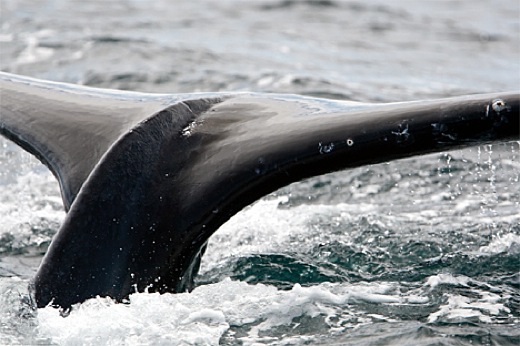 Image above: Photo of whale fluke from original article.
Image above: Photo of whale fluke from original article.
By Stephan Messenger on 12 October 2010 in TreeHugger - (http://www.treehugger.com/files/2010/10/humpback-whales-journey-breaks-distance-record.php)
What could drive a female humpback whale to travel a quarter of the world, shattering mammal migration records? The quest to find a mate, of course. The whale's journey took her from the coast off south Brazil all the way to waters of eastern Madagascar -- an incredible 6,125 miles. And it's not just feat of endurance that is impressive to researchers; Studying the epic trek may help biologists better understand the lengths that whales are willing to go to for a change of scene.
Without the use of tracking equipment, biologists instead were able to confirm the whale's record-breaking trek by examining photographs of the animal's tail -- one taken by researchers in Brazil and another by a tourist in Madagascar. Whale's tails, called flukes, are distinct between individuals, which helps researchers to map out their migration patterns.
This particular female was found to have traveled twice the distance undertaken by most whales in search of new breeding grounds.
"If I had to guess, I'd say this animal did a normal migration to the Antarctic [to feed] and went to Madagascar from there," Dr Peter Stevick, who led the research, told the BBC. "If I were to draw a track for it, it would be from Brazil to the Southern Ocean and from there into the Indian Ocean."
While the length of the female whale's journey is impressive, there's another reason that Dr. Stevick and his team are so fascinated. "This record is unusual, not only in being longer than any of those recorded migrations, but because it's not between a feeding ground and a breeding ground -- it's between two different breeding grounds." Also, it's typically males that venture beyond their regular breeding grounds to look for mates while females tend to stick with familiar locals, which means this female humpback isn't just shattering distance records, but also convention.
Ultimately, researchers are encouraged by the unexpectedly long-distance capacity the humpback has displayed, since it means the species may be more "flexible" than previously thought, allowing them to "remain adaptable" to changes in their environment.
.
No comments :
Post a Comment